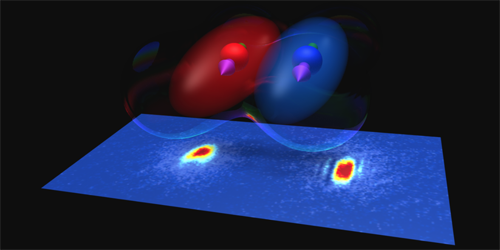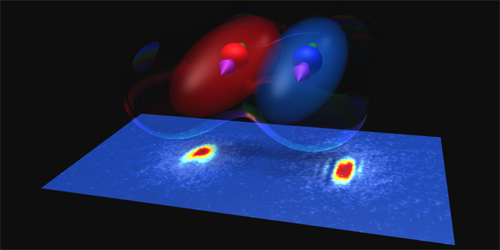Making Mixtures of Magnetic Condensates
In recent years, researchers have been able to prepare condensates of ultracold atoms with large magnetic moments. In these condensates, the interactions between the atoms’ magnetic dipoles give rise to exotic phases, some of which are analogous to those found in liquid crystals and superfluids. The condensates demonstrated to date have involved single species of magnetic atoms like dysprosium (Dy) or erbium (Er) (see 21 May 2012 Viewpoint). Now, Francesca Ferlaino and colleagues at the Institute for Quantum Optics and Quantum Information, Austria, have produced condensates that mix Dy and Er. The ability to couple two distinct dipolar atomic species will provide an opportunity to explore new quantum behaviors of ultracold gases.
Starting with an atomic beam of Dy and Er, the team used a combination of lasers and magnetic fields to trap the atoms and to cool them by evaporation. Getting both atomic species to condense at the same time, however, entailed a new trick. The researchers used traps whose shape and depth could be tuned so that the more weakly trapped Er would evaporate more easily than Dy, in turn serving as a coolant for the Dy.
Working with different isotopes of Dy and Er—some fermionic, some bosonic—they produced a variety of Bose-Bose or Bose-Fermi quantum mixtures. The authors observed signatures of strong interspecies interaction: For some isotope combinations, the forces between Er and Dy turned out to be repulsive, displacing the two condensates upwards and downwards, respectively, relative to the trap in which they were created. The magnetic mixture may allow researchers to study hard-to-probe quantum phases, such as fermionic superfluids with direction-dependent properties.
This research is published in Physical Review Letters.
–Nicolas Doiron-Leyraud
Nicolas Doiron-Leyraud is a Corresponding Editor at Physics and a researcher at the University of Sherbrooke.





